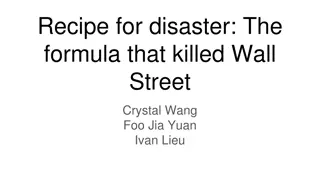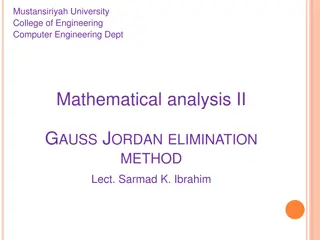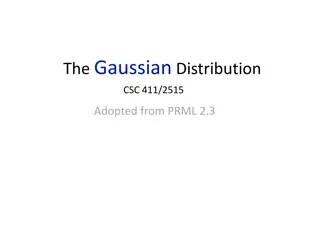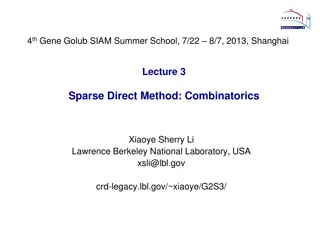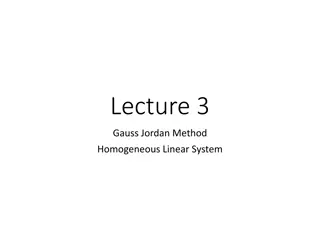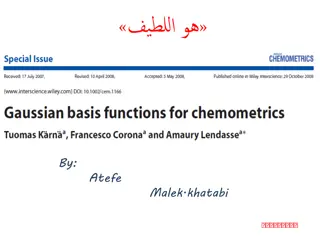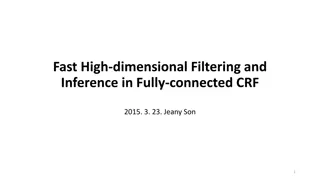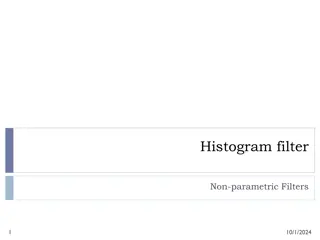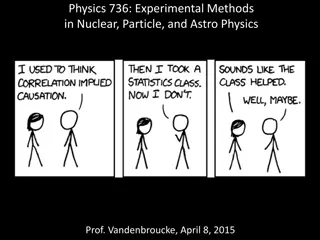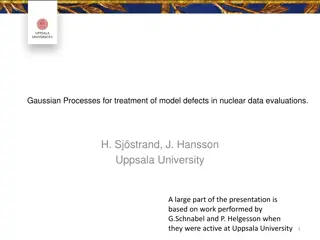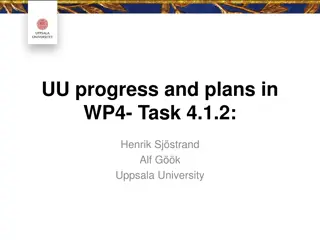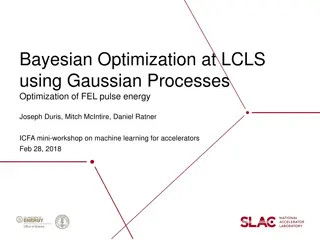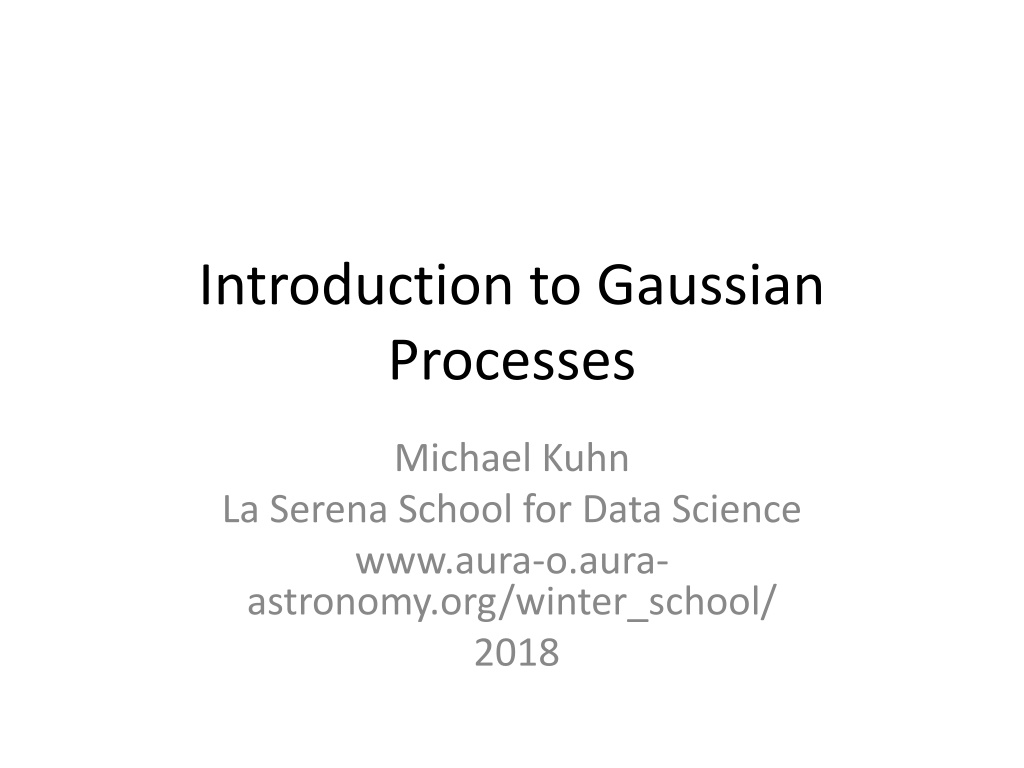
Gaussian Processes: Understanding Nonparametric Regression
Learn about Gaussian processes and their use in nonparametric regression, exploring concepts like multivariate normal distributions, covariance matrices, and Bayesian parameter estimation. Gain insights into the advantages and applications of Gaussian distributions in modeling complex data.
Download Presentation

Please find below an Image/Link to download the presentation.
The content on the website is provided AS IS for your information and personal use only. It may not be sold, licensed, or shared on other websites without obtaining consent from the author. If you encounter any issues during the download, it is possible that the publisher has removed the file from their server.
You are allowed to download the files provided on this website for personal or commercial use, subject to the condition that they are used lawfully. All files are the property of their respective owners.
The content on the website is provided AS IS for your information and personal use only. It may not be sold, licensed, or shared on other websites without obtaining consent from the author.
E N D
Presentation Transcript
Introduction to Gaussian Processes Michael Kuhn La Serena School for Data Science www.aura-o.aura- astronomy.org/winter_school/ 2018
Nonparametric Statistics Useful for modeling complex data where the model form is not known Disadvantage that these models can be harder to interpret Examples of nonparametric statistics: Histograms Kernel density estimation Commonly used nonparametric regression methods: Gaussian processes Splines Lowess Kernel smoothing 120 100 80 dist 60 40 20 0 5 10 15 20 25 speed
Gaussian Process 3 2 1 0 y 1 2 3 0 2 4 6 8 10 x A Gaussian process is a collection of random variables with the property that the joint distribution of any finite subset is a Gaussian.
Bayesian Perspective The Gaussian distribution can be thought of as a prior over functions (rather than over parameters) Distribution is updated by conditioning on the data Advantage because fitting a Gaussian process automatically gives not only the mean but the variance at each point
Objectives for this Lesson Gaussian processes Understand how to use a Gaussian distribution to perform nonparametric regression Review Multivariate normal (Gaussian) distributions Covariance matrices Marginalization and conditional distributions Log-likelihood Bayesian (hyper)parameter estimation
Gaussian Distribution Location parameter Standard deviation or covariance matrix
Gaussian Distribution Single variable Gaussian distribution Multivariate Gaussian distribution Covariance matrix
Properties of the Gaussian joint marginal joint conditional Marginalization Conditional Distribution and
Drawing points from a Gaussian distribution Several methods Cholesky factorization of K
Kernel Function In general we are interested in Gaussian processes with more than 2 points The kernel k(x,x ) gives the covariance of pairs of y values as a function of x values If k(x,x ) = k(|x-x |) a kernel is said to be stationary The squared exponential kernel is the most commonly used for interpolating smooth functions The effects of measurement error can be added with the kernel
Higher Dimensional Gaussians 2 K = 4 row 6 8 10 2 4 6 8 10 column 4 2 y 0 2 0 1 2 3 4 5 6 7 x
Try the sample code for drawing from a Gaussian process
OrnsteinUhlenbeck process 4 2 0 y 2 4 0 2 4 6 8 10 x
Inference with a Gaussian Process For a given kernel k(x,x ) there the mean and the variance of the posterior distribution can be found with matrix algebra Note that even if the mean of a Gaussian process is zero, the mean of the posterior can be non-zero We do not need to integrate over parameter distributions to find the variance of the function
Hyperparameters 3 3 l=1, =0.001 l=0.3, =0.001 2 2 1 1 0 y 0 y 1 1 2 2 3 3 0 2 4 6 8 10 0 2 4 6 8 10 x x Parameters in the mean (x) and kernel k(x,x ) are known as hyperparameters For example, for the squared exponential the length scale l is a hyperparameter
Likelihood Can you spot any potential computational problems dealing with this quantity?
Useful Equations Conditional Distribution Log likelihood
Answers 3 2 1 0 y 3 1 2 2 1 3 0 y 2 4 6 8 10 1 x 2 3 2 4 6 8 10 x
Answers 3 3 l=1, =0.3 l=1, =0.001 2 2 1 1 0 0 y y 1 1 2 2 3 3 0 2 4 6 8 10 0 2 4 6 8 10 x x 3 l=0.3, =0.001 2 1 0 y 1 2 3 0 2 4 6 8 10 x
Binary Classifier Model a latent function f(x) with a Gaussian process Put f(x) through the sigmoid function (Credit: David MacKay)
Geostatistics Gaussian processes have been used for a long time Known as kriging Developed by Danie Krige in the 1960s GeoR in CRAN (Credit: ArcGIS) (Credit: GIS Geography)
Celerite Fast Gaussian Processes code from Foreman-Mackey et al. (2017) Restrictions of kernel make solving K-1 and det K easy Turn O(n3) operations into O(n) Several versions of this kernel have been examined in astronomical contexts Rybicki & Press (1995); Kelly (2011); Ambikasaran (2015) This kernel may be particularly useful for stars with quasiperiodic behavior
If time permits, go to the Python jupyter notebook for celerite. https://celerite.readthedocs.io/en/stable/
Resources Textbooks Rasmussen & Williams (2006; www.gaussianprocess.org/gpml/) MacKay (2003; www.inference.phy.cam.ac.uk/mackay) Useful python packages GPy pyGP GPflow celerite (Foreman-Mackey et al. 2017) George (Foreman-Mackey 2015) scikit-learn CRAN packages (https://cran.r-project.org) mlegp GauPro GPfit




